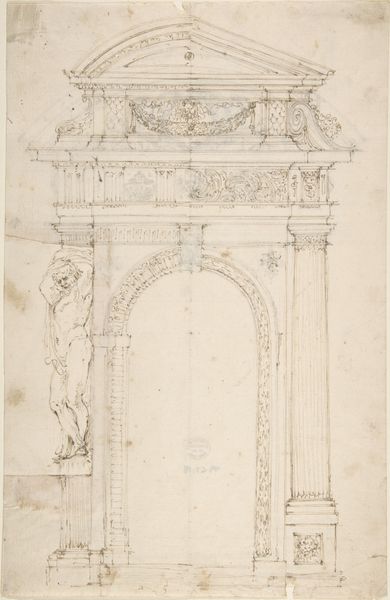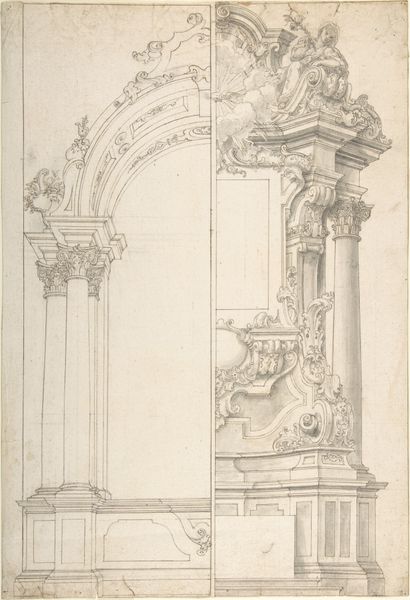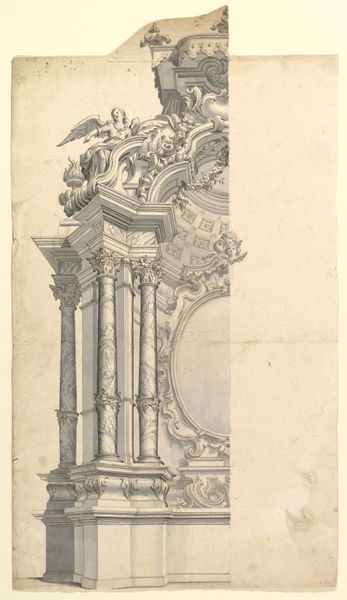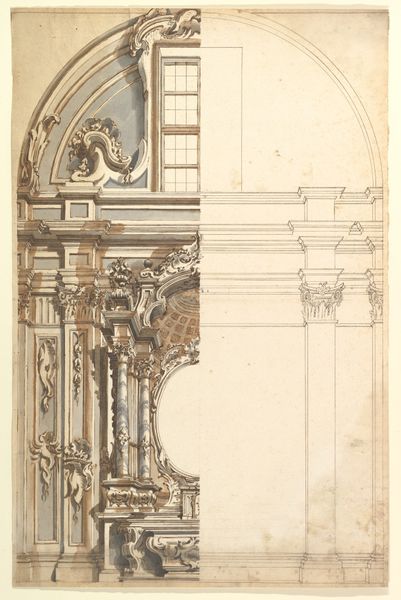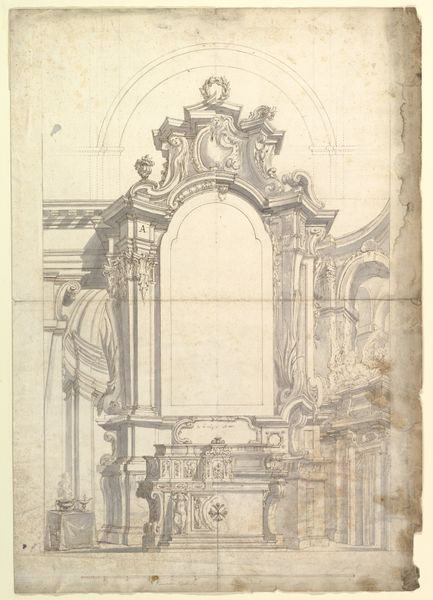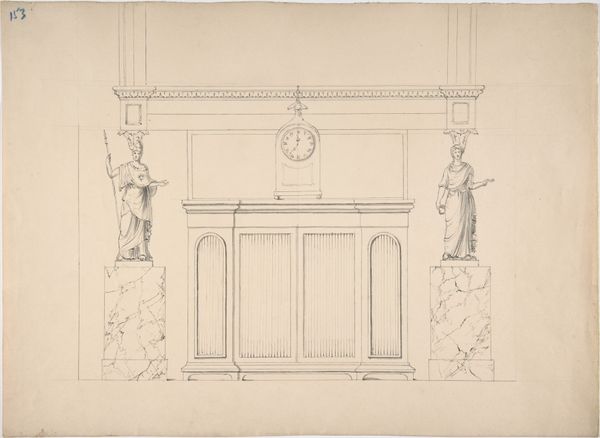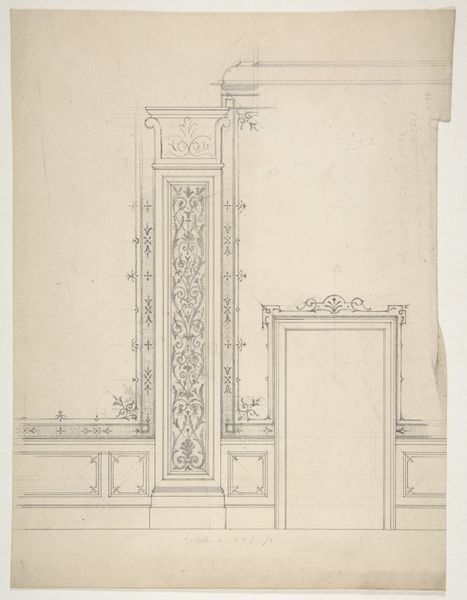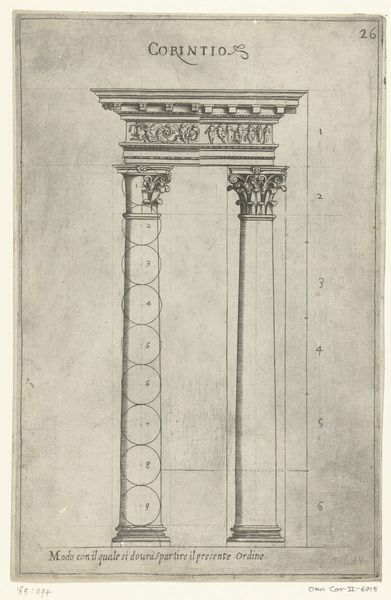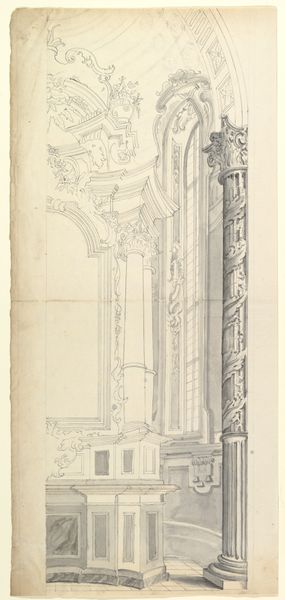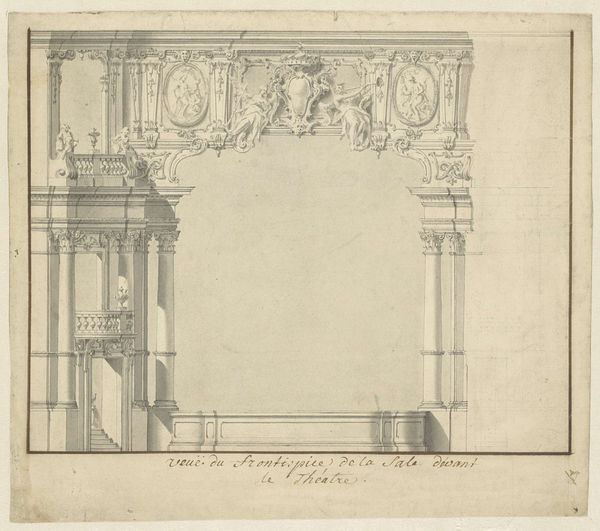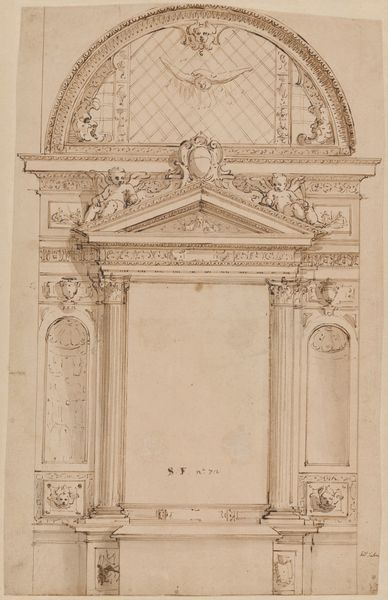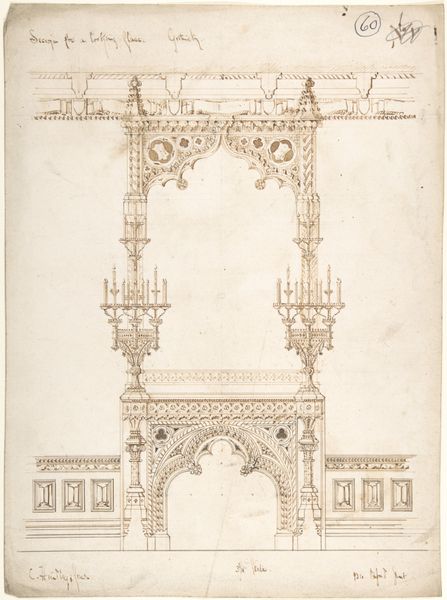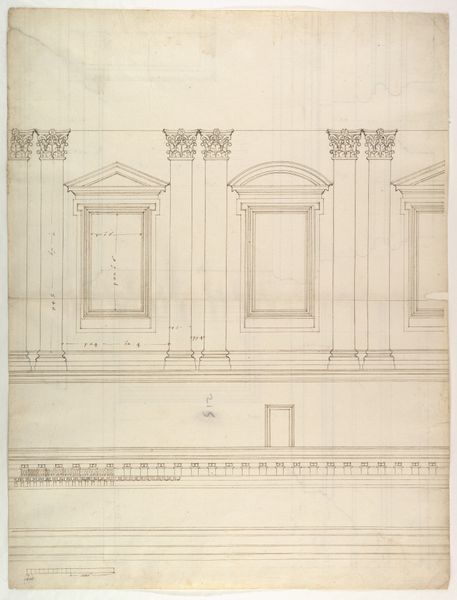
Architectural Perspective, in an Oval: Porch of a Palace with Corinthian Colums. 1657 - 1743
0:00
0:00
drawing, print, pencil, architecture
#
drawing
#
baroque
# print
#
pencil sketch
#
classical-realism
#
perspective
#
geometric
#
pencil
#
cityscape
#
history-painting
#
architecture
Dimensions: 16-7/8 x 13-1/4 in. (42.9 x 33.7 cm)
Copyright: Public Domain
Curator: This exquisite pencil and ink drawing, dating roughly from 1657 to 1743, presents an architectural perspective, specifically, "Porch of a Palace with Corinthian Columns." It is attributed to Ferdinando Galli Bibiena. What are your immediate thoughts? Editor: It feels almost ghostly, like peering into a faded memory. The delicacy of the lines lends a dreamlike quality, though the imposing architecture hints at power and grandeur. Curator: That contrast is key. Bibiena worked during a time of immense social stratification. Architectural drawings like this served not merely as blueprints, but as assertions of power, wealth, and often, exclusionary aesthetics. The very emphasis on classical ideals connects to a desire for legitimacy. Editor: The columns themselves are potent symbols. In Western art they represent stability, order, and a link back to classical empires. This feels aspirational, even in its faded form. Did audiences understand this iconography at the time? Curator: Absolutely, though in ways shaped by their own social positions. For the elite, it reaffirmed their status; for others, it could represent unattainable ideals or even imposed power structures. Consider the use of perspective, the way it seems to force the viewer's eye towards a vanishing point. It can symbolize control – of space, of vision, and metaphorically, of social hierarchies. Editor: And then the oval format, which seems to be framing the image almost like a distant dream… It creates a separation, reinforcing the feeling of observing something both magnificent and inaccessible. Curator: Precisely. Also note the use of light and shadow, though subtle, which amplify the sense of depth and drama. Bibiena masterfully uses these elements to subtly enforce visual authority, placing the architecture not just within a physical space but a conceptual and social one. Editor: Reflecting on it, the drawing resonates beyond a mere depiction of architecture; it represents layers of ambition, power, and cultural values—encoded in its lines. Curator: Yes, Bibiena's work becomes a valuable lens for understanding the social dynamics inherent to the built environment and artistic production of his era.
Comments
No comments
Be the first to comment and join the conversation on the ultimate creative platform.
